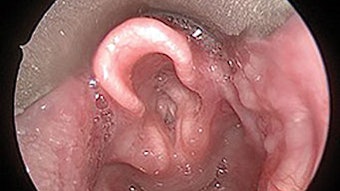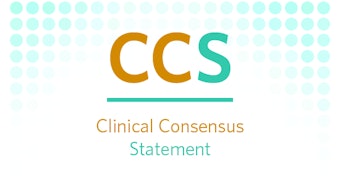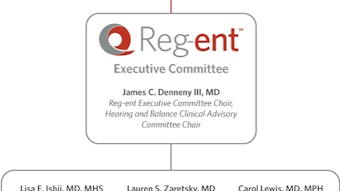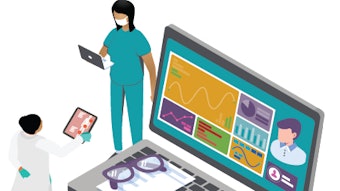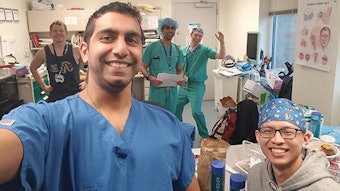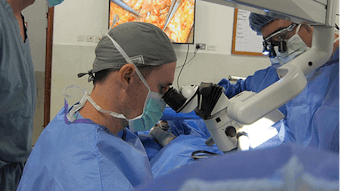Out of Committee
With the goal of reducing disease exposure and transmission, telemedicine became an immediate necessity in 2020 due to COVID-19. This enormous and rapid leap forward in the utilization of telemedicine technology also provides an opportunity to address other challenges that physician practices face. As such, it is important to understand the many rapidly changing logistical, legal, regulatory, and financial implications as early as possible.

Telemedicine: Collaboration among Patient Safety and Quality Improvement, Telehealth, and Practice Management Education Committees
Steven T. Kmucha, MD, JD, Lance A. Manning, MD, and Douglas M. Hildrew, MD
With the goal of reducing disease exposure and transmission, telemedicine became an immediate necessity in 2020 due to COVID-19. This enormous and rapid leap forward in the utilization of telemedicine technology also provides an opportunity to address other challenges that physician practices face. As such, it is important to understand the many rapidly changing logistical, legal, regulatory, and financial implications as early as possible.
AAO-HNS COVID-19 Podcast Series Episode 5: Telemedicine [published April 2]
Lance A. Manning, MD, Chair of the AAO-HNS Practice Management Education Committee and Chair Elect of the Board of Governors is joined by Douglas M. Hildrew, MD, Chair of the AAO-HNS Telemedicine Committee and Assistant Professor of Surgery at the Yale School of Medicine, Division of Otolaryngology-Head & Neck Surgery, and Lawrence M. Simon, MD, former AAO-HNS CPT Advisor, member of the AMA’s CPT Editorial Panel, and Regional Director for Blue Cross and Blue Shield of Louisiana, for a discussion on the rapid adaptation of telemedicine and related issues due to the coronavirus pandemic.
https://directory.libsyn.com/episode/index/id/13826069
AcademyU Free eCourse: Telemedicine during the Pandemic
Free for members and nonmembers: This timely new course provides a guide for immediate implementation of telemedicine in your practice in response to the COVID-19 pandemic. This course was developed in collaboration with the Practice Management Education Committee and Telemedicine Committee.
http://academyu.entnet.org/diweb/catalog/item/id/5098818/q/f2=1&c=177&o=-esd
Telemedicine implementation is a team effort that requires training, open communication, and commitment for long-term success. While there may have been an urgent need to get telemedicine services up and running due to the rapid onset of the COVID-19 pandemic, telemedicine needs and services often change significantly over time. In the beginning, it is important to have open discussions about concerns, timing, goals, and objectives so that your entire team is aligned. It is equally important to list and share the anticipated benefits and challenges of the telemedicine program. A clear and thorough evaluation, sharing, and understanding of your practices’ needs and processes will make implementation easier and hopefully minimize future problems. Creating a brief list of specific short- and long-term goals with accessible metrics and a process for tracking your progress will help guide you and your staff to easily identify successful achievement of these important milestones. Obtaining timely feedback from schedulers, nursing and medical assistant staff, physician extenders, and other members of the care team who may not have been part of the initial discussions and early phases of implementation will help you all to quickly identify opportunities for improvement in telemedicine training, new workflow procedures, triage protocols, and patient education materials.
For those in larger organizations, getting support from the leadership team and administration is a key element of the long-term success of a telemedicine program. Without broader support, it can be challenging to continue to get the necessary resources and to prioritize the staff time needed to make implementation or continuation successful. Be sure to share the operational and quality issues that have been identified as well as how these can be aligned with group and/or organizational goals and the metrics. Sharing which tools of telemedicine are working best for your team and patients with your organizational administrators can help everyone understand how this technology can improve operational efficiencies and thereby deliver a positive return on investment. It is important to align expectations and goals for how everyone will work together and communicate to optimize implementation and improve practice workflow, documentation, and patient satisfaction. It is important early in the process to discuss the level of support and training that will be needed and to think creatively about when, where, and how the platform can provide additional value by optimizing practice efficiency.
Telemedicine appointments will likely require an adjusted workflow to ensure that you are offering a positive experience for patients and the care team. Daily logistics such as physical workspace arrangements, appointment scheduling procedures, triage, staff time, and communication may have to be altered to integrate telemedicine as seamlessly as possible into your practice. Consider how to incorporate telemedicine appointments with the least amount of workflow disruption. It is important to try to understand and operationalize the preferences and needs of patients, such as what types of technology and communication barriers they may be encumbered by when engaging in a telemedicine visit.
Telemedicine visits can only be truly successful when patients are empowered to use them. It is critical to ensure that patients are educated and engaged through a patient-centered approach to maximize the positive impact of these new telemedicine services. As you plan and discuss when and how to inform patients about telemedicine services, it is important to ensure that the entire team is prepared to answer patient questions such as how to access the platform and how to schedule an appointment. Define appropriate appointment expectations and limitations and be prepared to kindly communicate these in order to promote awareness, receptivity, and participation.
With the rollout of a telemedicine program, much of the energy will be focused on making patients and referring physicians aware of the availability of the new service, scheduling appointments, supporting clinicians and patients as they start using the technology, ensuring appropriate E/M documentation, currently approved CPT codes and respective site of service codes, and ensuring a path to payment. It will be important to monitor the impact of your program by tracking the key success metrics mentioned earlier, including timely and correct reimbursement for services rendered as the reimbursement, documentation, and coding requirements from both private payers and Medicare and Medicaid are rapidly changing. It is also critical to be sure that you continue to collect and respond to feedback from administrative staff, patients, and clinicians about their experiences with the program to ensure that efficiencies are optimized and that you are responding well to the dynamic nature of the legal, regulatory, and logistical telemedicine environment.
New technologies are rapidly and fundamentally changing the way patients interact with healthcare providers and the way that providers interact and communicate with each other for the benefit of the patient. Successful implementation and smooth interoperability of these many digital health technologies are imperative for improving patient outcomes and ensuring financial stability for healthcare practices. With the evolving COVID-19 pandemic, its impact on access to medical care and the high risk of otolaryngology provider exposure, the incorporation of telemedicine services into otolaryngology practice has been unavoidable. In addition, it should be our mission to provide the safest experience possible for our patients—something that remote triage and management by way of telemedicine is particularly adept at. Otolaryngologists require ongoing support, frequent regulatory updates, and continued telemedicine education to best navigate this transition, to implement telemedicine into their practices, and to enhance their ability to care for patients both short-term and long-term. The tools and guidelines being created now are already helping many to use telemedicine and will continue to help define its role and to help shape and improve the future of otolaryngology practice. There are many potential resources for up-to-date telemedicine information and guidance. On the AMA website you can find the AMA Quick Guide to Telemedicine in Practice and the Telehealth Implementation Playbook and the AMA STEPSforward Module on Telehealth. Likewise, the Centers for Medicare & Medicaid Services provides updated information and toolkits on their website. Other potential resources include the American Telehealth Association, medical liability companies, private partners, and your state and regional medical associations. The AAO-HNS provides numerous resources relevant to telemedicine in otolaryngology practices: podcasts, informational documents, advance releases of important journal articles, webinars, frequENTcy, OTO News, ENTConnect, and online courses. To access the AAO-HNS resources on telemedicine, visit https://www.entnet.org/content/coronavirus-disease-2019-resources.
And while there are a number of potential unique risks and liabilities associated with telemedicine services, these have been fully addressed in other publications. See the three-part series from Steven T. Kmucha, MD:
Physician liability issues and telemedicine: Part 1 of 3. Ear Nose Throat J. 2015;94(10-11):428-429.
Physician liability issues and telemedicine: Part 2 of 3. Ear Nose Throat J. 2015;94(12):466-469.
Physician liability issues and telemedicine: Part 2 of 3. Ear Nose Throat J. 2016;95(1):12-14.


